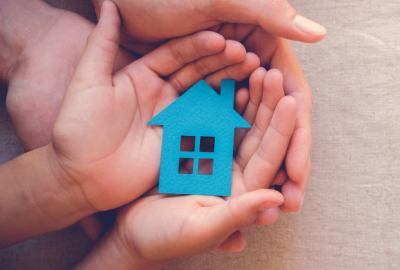
Homelessness in NYC Elementary Schools: Student Experiences and Educator Perspectives
Kathryn Hill and Zitsi Mirakhur (February 2019)
The large and growing number of New York City students who lack stable housing has recently received much attention from advocates, researchers, educators, and policymakers. This new brief highlights not only that the City’s rates of student homelessness have increased, but also that the problem is most prevalent during the elementary years—a time that is crucial for students’ long-term academic success.
The study makes several important contributions to the existing research on student homelessness in NYC. Focusing on students who began kindergarten in the fall of 2012 and following them for a full five years, the study explores the multiple ways in which young children experience homelessness over time, including differences in their type and duration of housing instability. It also draws on interviews with educators to document challenges that schools face in serving large numbers of homeless students, as well as practices that school staff say contribute to improving homeless students’ educational experiences.
Among our key findings:
Who experiences homelessness?
- Of the 81,669 students who began kindergarten in the fall of 2012, 10,312 students—over 12 percent of the cohort—experienced homelessness at some point before their 5th grade year.
- Students who experienced homelessness were not evenly distributed across community school districts (CSDs) and schools in the City. These students were concentrated in upper Manhattan, parts of the Bronx, and northern Brooklyn. Remarkably, over 10 percent of all students who ever experienced homelessness began their kindergarten year at schools in District 10 in the Bronx.
- Relative to others in their cohort, students who experienced homelessness were disproportionately Black and Latino, and less likely to be White and Asian than students overall.
What are the different ways in which students experience homelessness?
- Almost 70 percent of students who experienced homelessness did so for more than one year, and more than a quarter were homeless for all five years that we followed them.
- 58 percent of homeless students were doubled up—meaning they were living with extended family or friends due to economic hardship.
- Educators we interviewed said that, in general, students living in shelters were needier than those who were doubled up.
- 95 percent of students who were in a shelter—and those who were in a shelter for longer than the average time (of three years)—were Black or Latino, underscoring the disproportionate impact of extreme poverty on NYC’s Black and Latino students.
- Students who were in shelters for three or more years had much lower educational performance than other students, with fewer than 20 percent attaining proficiency on either the state math or ELA test given in 4th grade.
How does homelessness disrupt students’ educational experiences?
- Homeless students in our study changed schools substantially more often than permanently housed students, with those in shelters moving around the most.
- Homeless students struggled with attendance, particularly students in shelters. Over 80 percent of students who lived in shelters for three or more years were chronically absent during one or more of the years of our study.
- Educators emphasized the emotional toll that homelessness often takes on children, affecting their classroom behavior and their academic performance.
How are schools supporting homeless students?
- We conducted interviews in five schools that have particularly high concentrations of homeless students—and where those students had outcomes that are similar to those of housed students across the City.
- Educators in these schools highlighted a number of challenges, including identifying homeless students, coordinating services, and deciding how to allocate limited resources.
- They also described the importance of developing trusting relationships with families, creating routines to examine student attendance (and other) data, and having non-instructional staff who can focus on supporting homeless students’ needs—which schools often achieved via partnerships with community-based organizations (CBOs).
The brief outlines a number of important questions raised by these findings, including questions about the concentration of very poor students in specific neighborhoods and elementary schools; the potential to provide educators with better data about homeless students; and the level and type of staffing required to support these students effectively. Our findings also point to the need for better evidence about school-CBO partnerships and their capacity to improve the educational experiences and outcomes of homeless students.
This study is part of the Research Alliance’s Equity, Access, and Diversity series, which aims to advance a better understanding of the mechanisms driving educational inequality and to identify promising strategies to produce more equitable learning opportunities and outcomes for NYC students.

